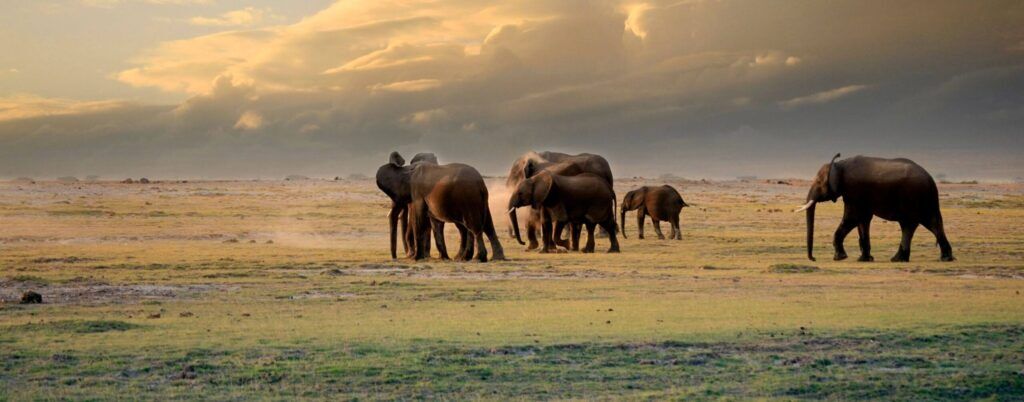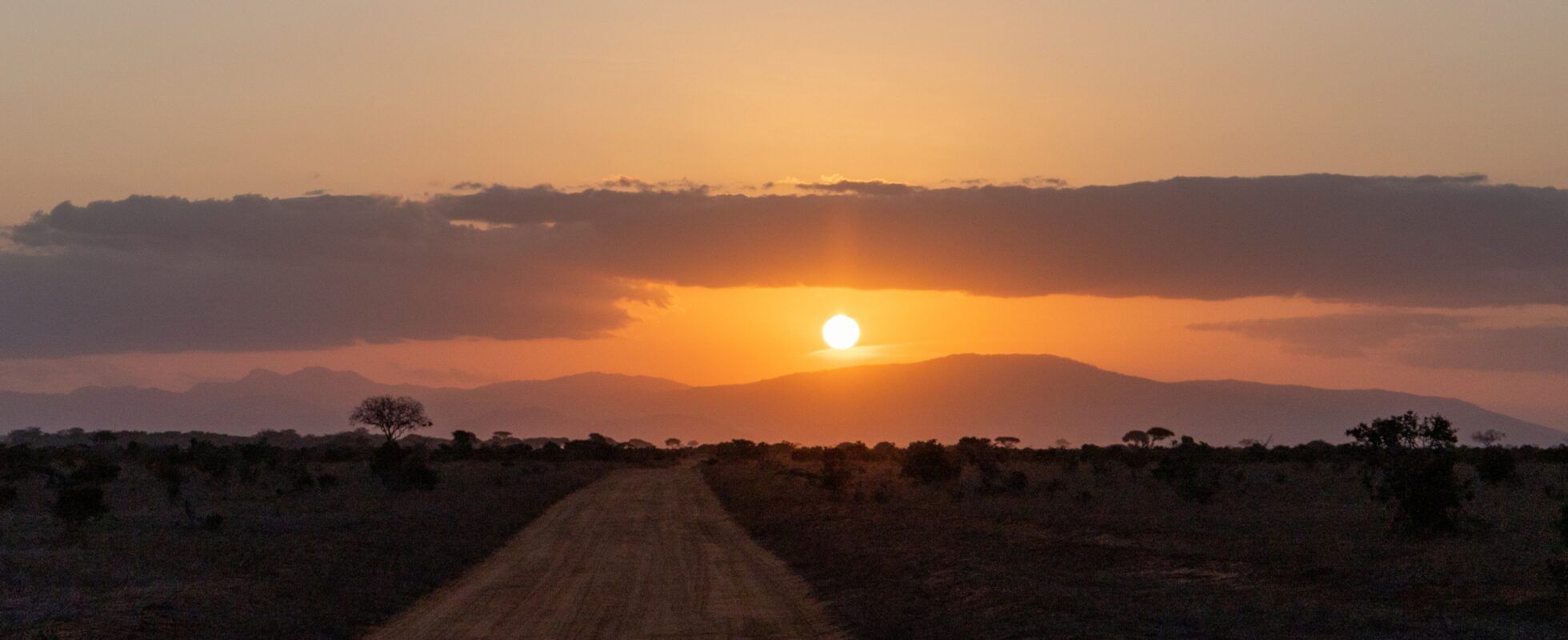
- 24/7 service
- All accommodations

Tsavo East: Kenya’s oldest and largest park, famous for its red elephants and endless open plains. Explore this remote wilderness and experience safaris far off the beaten path.
The Tsavo East National Park is a huge 13,000 square kilometres park, impressive and famous for its many lions and elephants. Founded in 1948, it is one of the oldest National Parks in the country. Here you cruise the outstretched savannah of the Yatta Plateau, while large groups of elephants walk these red dusty plains.
En route you pass a spectacular amount of other animals. The Big Five (lions, buffalos, leopards, rhinos and elephants) live here, together with zebras, African wild dogs, cheetahs, antelopes, impalas and more. A very special inhabitant is the critically endangered Hirola antelope. For the longest time, only animals and small local tribes inhabited this part of country. In the 1890s, however, the British began a concerted effort to colonise the interior of Kenya. They built a railway through Tsavo to connect Mombasa and Nairobi. Since the land was vast and not good for cultivation, the government decided to make it a national park in 1948. This made room for elephants and rhinos to thrive and be safe from poaching.
Interesting detail #1: two lions terrorised the railway construction crew for weeks and killed 135 workers before they were shot. This is why Tsavo is still famous for its “man-eating lions”. But rest assured, although there are over a hundred lions in Tsavo, this is not the case anymore and safety measures have greatly improved.
Interesting detail #2: Tsavo East is the home of some supertuskers – elephants with tusks so big they reach the ground. The most famous supertusker, Tim, could be found in Amboseli National Park. Even though this legend is not with us anymore, his legacy is carried one by the fascinating supertuskers of Tsavo East.
There are especially two spots in Tsavo that are perfect for admiring wildlife: Mudanda Rock and Lugard Falls. The 1.6 kilometres rock formation of Mudanda allows for great viewing of animals drinking below. Lugard Falls is not an actual waterfall but a series of rapid waters that are filled with hippos and crocs. Tsavo East National Park basically has it all!
Tsavo East National Park has four gates that all give access to the park from different directions. From Mombasa it’s a four to five hour drive to the Buchuma Gate. Coming from Nairobi, it’s a seven to eight hour drive to the Manyani Gate. There are no scheduled flights to Tsavo East National Park but there are some airstrips available for chartered flights.
Kenya has a cold season from June to November with average temperatures of 20°C during the day. Nights can get cold during this season, so it’s best to take a sweater.
Mid-October to November is the short rainy season, after which temperatures rise up to 30°C during the day from December to April. April and May come with showers again as this is the long rainy season. It normally doesn’t rain throughout the day as one sees sunny mornings with rain clouds building up towards the afternoons and evenings.
The dry months of June to October and January to February are best to visit Tsavo East National Park, when conditions in the park are favourable for wildlife watching. During the peak of the short rains (November) and the long rains (April and May) road conditions can be more challenging.
Tsavo East National Park is proof that sometimes bigger is better. It’s massive in size and home to countless lions, the Big Five, the biggest antelope in the world as well as supertuskers – elephants with tusks so big they touch the ground. Get ready to be wowed by the sheer beauty of the park’s wilderness and wildlife.


